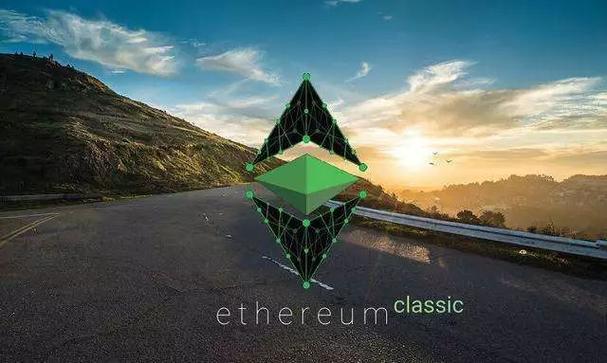
Difference Between ETH and ETC
When it comes to cryptocurrencies, Ethereum (ETH) and Ethereum Classic (ETC) are two of the most prominent names. Despite sharing a common origin, they have evolved into distinct entities with unique characteristics. In this article, we will delve into the differences between ETH and ETC from various dimensions, including their history, technology, community, and market performance.
History
Ethereum was created by Vitalik Buterin in 2015, with the goal of building a decentralized platform that allows developers to create and deploy smart contracts and decentralized applications (DApps). The Ethereum network launched in July 2015, and its native cryptocurrency, ETH, was born.

Ethereum Classic, on the other hand, originated from a hard fork of the Ethereum network in 2016. This hard fork was a response to the DAO (Decentralized Autonomous Organization) hack, where a significant amount of ETH was stolen. The community was divided on how to handle the hack, leading to the creation of Ethereum Classic as a separate blockchain.
Technology
One of the most significant differences between ETH and ETC lies in their underlying technology.
Ethereum has continuously evolved over the years, with several major upgrades, such as Ethereum 2.0, which aims to transition the network from a Proof of Work (PoW) consensus mechanism to a Proof of Stake (PoS) mechanism. This transition is expected to improve scalability, security, and energy efficiency. Ethereum also introduced sharding, a technique that divides the network into smaller, more manageable pieces, further enhancing scalability.
Ethereum Classic, on the other hand, has remained relatively unchanged since its inception. It continues to use the PoW consensus mechanism and has not adopted any major technological upgrades like Ethereum 2.0. This has led to concerns about its long-term viability, especially in light of the increasing environmental concerns surrounding PoW.

Community
The communities surrounding ETH and ETC also differ significantly.
The Ethereum community is known for its active participation and innovation. It has a strong focus on research and development, with numerous projects and initiatives aimed at improving the network. The community also values decentralization and collaboration, which is evident in the diverse range of contributors and stakeholders involved in Ethereum’s development.
In contrast, the Ethereum Classic community is smaller and less active. While it remains committed to the original vision of Ethereum, it has faced challenges in attracting new developers and users. This has led to concerns about the long-term sustainability of the project.
Market Performance
When it comes to market performance, ETH and ETC have followed different paths.
Ethereum has consistently outperformed Ethereum Classic in terms of market capitalization and trading volume. This can be attributed to its continuous technological upgrades, strong community support, and widespread adoption by developers and users. Ethereum has also become the de facto standard for DApps, further boosting its market performance.
Ethereum Classic, on the other hand, has struggled to maintain its market position. Despite its commitment to the original vision of Ethereum, it has failed to attract significant attention from developers and users. This has resulted in a lower market capitalization and trading volume compared to ETH.
Conclusion
In conclusion, Ethereum (ETH) and Ethereum Classic (ETC) are two distinct cryptocurrencies with unique characteristics. While they share a common origin, their paths have diverged significantly. Ethereum has focused on continuous innovation and community engagement, leading to its strong market performance. Ethereum Classic, on the other hand, has remained relatively unchanged, facing challenges in attracting new users and developers. As the cryptocurrency landscape continues to evolve, it remains to be seen which of these two projects will emerge as the dominant force in the long run.




